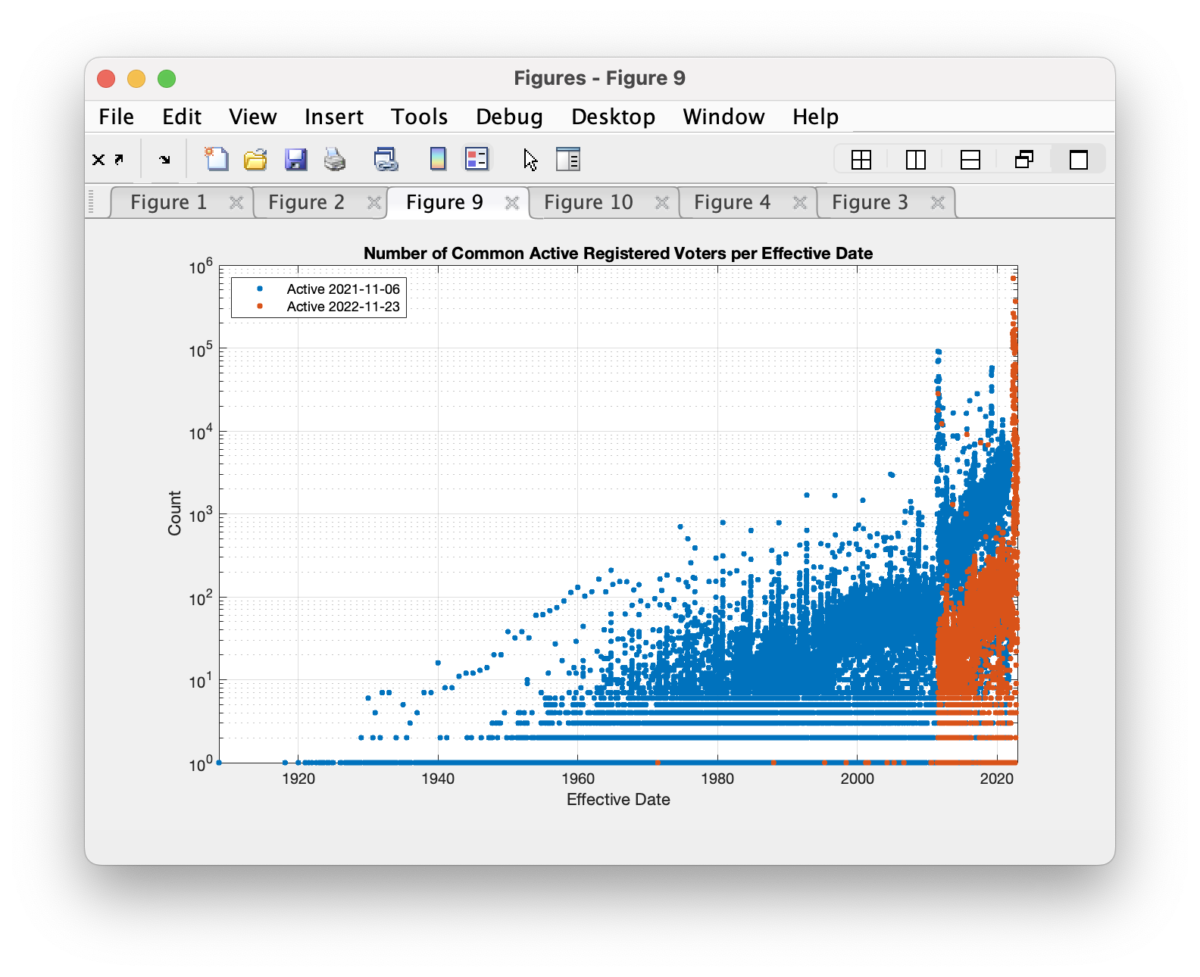I’ve stumbled across an interesting data artifact that I’m not sure what to make of. But I will present it here for completeness.
In the Registered Voter List available from the VA Dept of Elections (“ELECT”), each record of a registered voter has an “effective date” associated with it. This can be the same as the actual registration date, or the date that the voters record is returned to “active” status, etc. It appears that sometime within the last year, almost all of the voter registrations with a previous effective date earlier than June 2011 have had their effective date reassigned.
For this analysis I am using an RVL that I purchased from ELECT on 2021-11-06 and comparing it with an RVL purchased on 2022-11-22. I am only comparing the records associated with common voter IDs between each dataset. Any new or removed voters in the last year have been removed from the data and the corresponding plots below.
In the 2021 RVL, we can see the distribution of the effective dates in the histogram below. The majority of records have rather recent effective dates, but there are diminishing tails from long-term voters who’s effective date of their registration goes back many years. (The y-axis in the plot is logarithmic, so we can better see the shape of the distribution tails.)
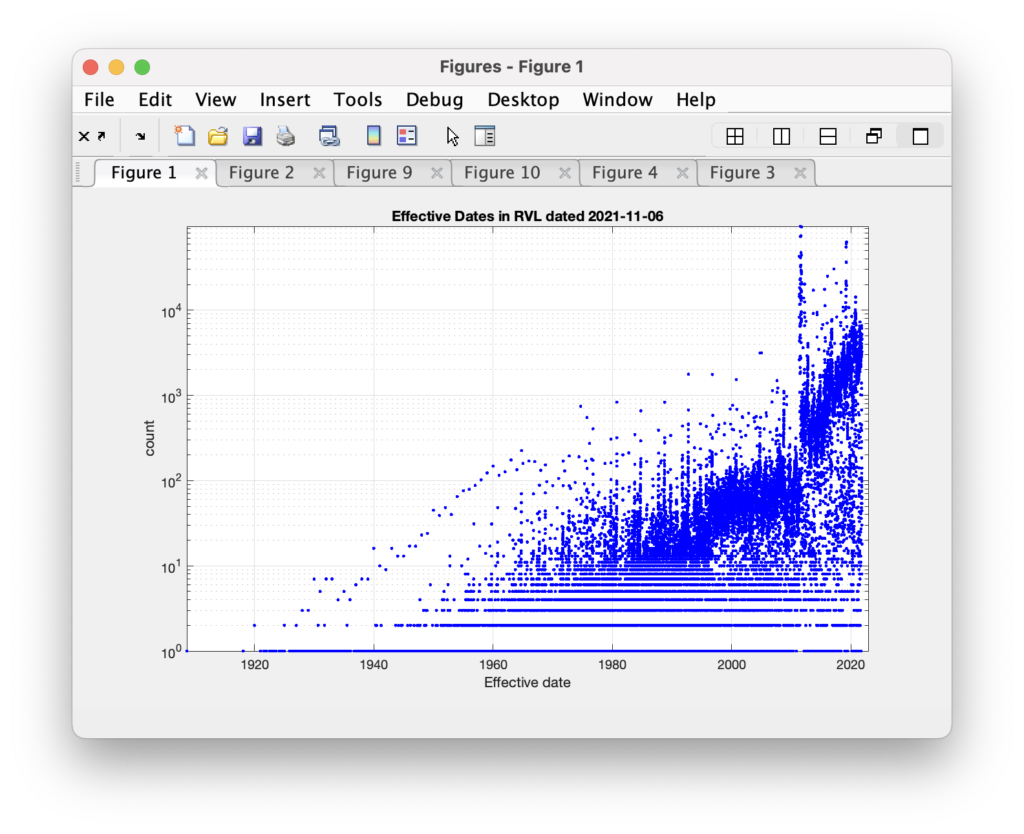
This isn’t all-together so surprising. Newer voters, or voters who have made recent changes to their registration information, will likely get an updated effective date on their voter registration record. Older, or longer term voters, that have not made any recent changes and stay active would show older effective dates on their records.
Now compare that to the RVL file dated 2022-11-22. Again, this comparison and the data in these plots is only those records that share common voter ids between the two files. Sometime between the time I downloaded the 2021-11-06 RVL and the 2022-11-22 RVL, almost all records with effective dates before July 2011 have had their effective dates reset to a more recent date.
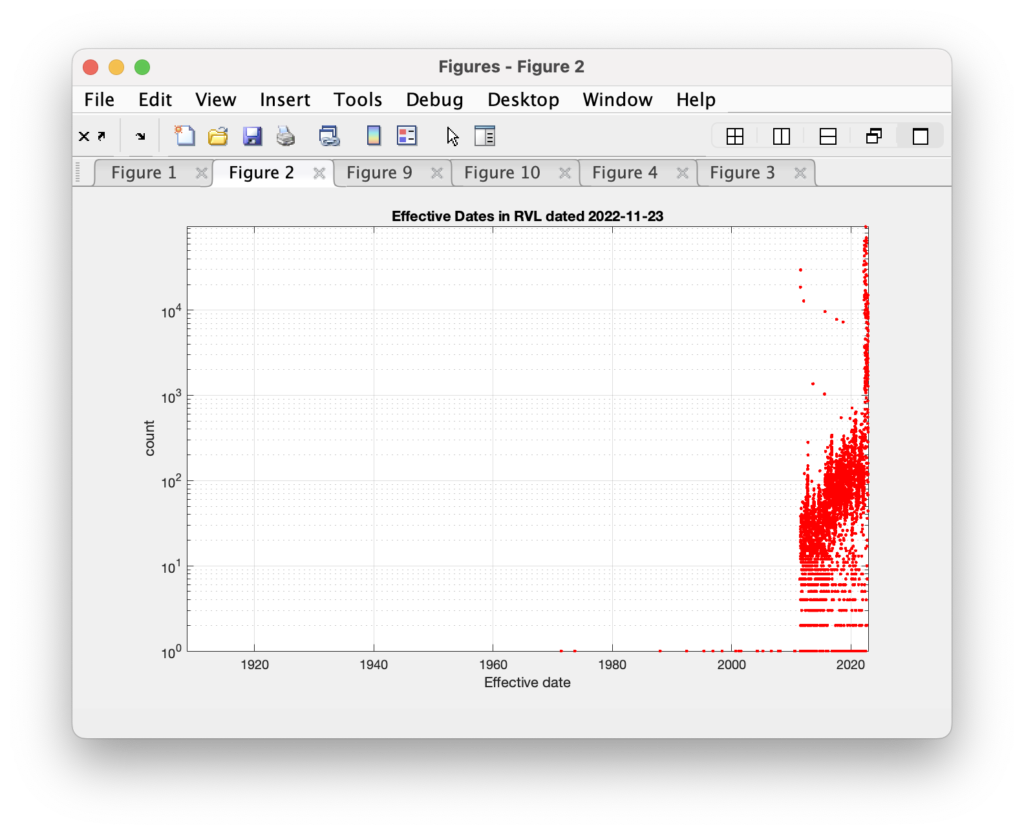
I don’t really know what to make of this. Was there a mass update of voter registration records? Or a database restore, or some other operation on the records?
Even more interesting is when we superimpose the two histograms we see that the 2022 records with effective date after July 2011 look to also have had a significant percentage of dates reset. We see the red curve maintains it shape, save for the large spike at the far right, but is shifted lower … as if a constant percentage of the records have been included in the effective date shift.
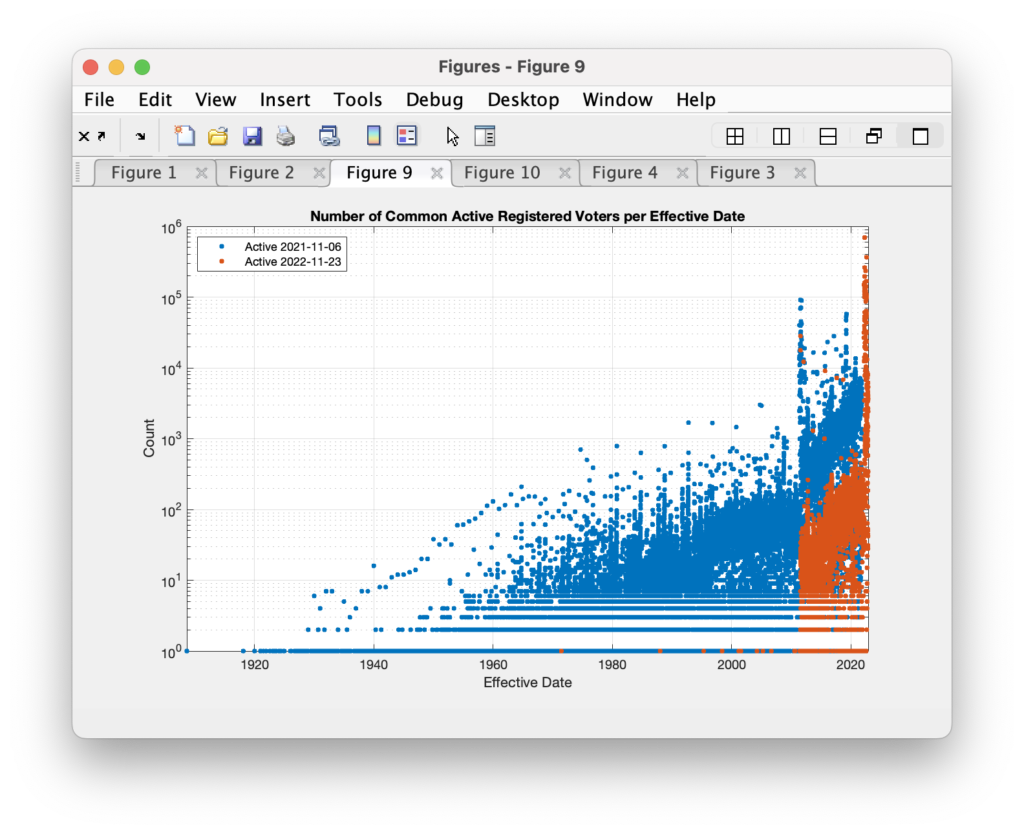
Now if we apply a constant multiplier of 20x to the red (2022) dataset we can mostly re-align the histograms.

Of the effective dates that were changed between the two files, the distribution of the adjustments to the effective dates is shown below. I find it interesting that there are a number of records where the effective date has been moved backwards (?) in time.
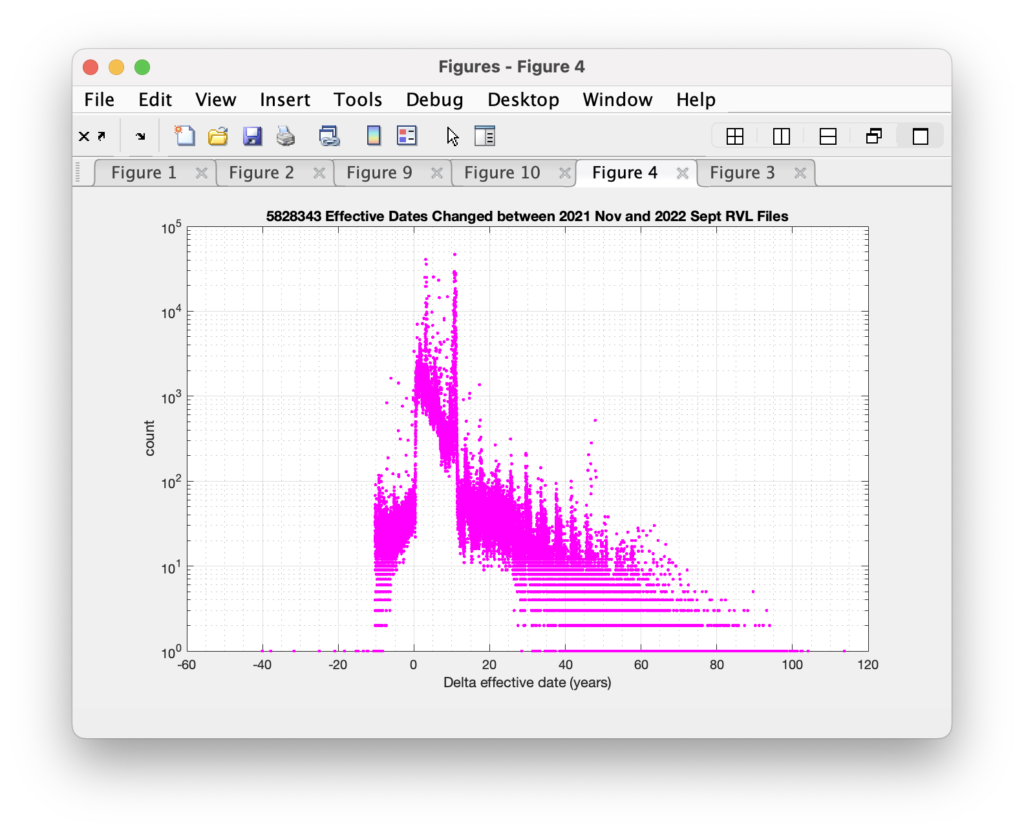
We know there have been significant issues with the database used by ELECT (known as the “VERIS” database), so maybe this is an artifact of some maintenance operations or repairs on the data entries? Or maybe this is a symptom of a larger problem. Whatever it is, it doesn’t make a lot of sense in what should be a very well maintained and authoritative set of records.
